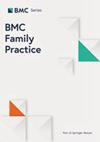Assessment of eye health programme reach by comparison with rapid assessment of avoidable blindness (RAAB) survey data, Talagang, Pakistan
IF 3.2
3区 医学
Q1 MEDICINE, GENERAL & INTERNAL
引用次数: 0
Abstract
The purpose of this study was to quantify how much of the burden of visual impairment (VI) and unmet need in Talagang, identified by Rapid Assessment of Avoidable Blindness (RAAB) survey data, has been addressed by Community Eye Health (CEH) programme efforts. A RAAB survey was carried out in November 2018, with 2,824 participants in Talagang Tehsil, Punjab, Pakistan, aged 50 and over. Census data were used to extrapolate survey data to the population. Alongside this, a CEH programme was launched, consisting of community eye screening, and onward referral to rural health centres, secondary or tertiary ophthalmological services, as required. This health intervention aimed to address the eye care needs surfaced by the initial survey. From 2018 to 2022, 30,383 people aged 50 or over were screened; 14,054 needed referral to further steps of the treatment pathway and more detailed data collection. Programme data were compared to estimates of population unmet needs. Main outcome measures were prevalence of VI, and proportion of need met by CEH Programme, by cause and level of VI. Among those aged 50 and over, 51.0% had VI in at least one eye. The leading causes were cataract (46.2%) and uncorrected refractive error (URE) (25.0%). In its first four years, the programme reached an estimated 18.3% of the unmet need from cataract, and 21.1% of URE, equally in both men and women. Robustly collected survey and programme data can improve eye health planning, monitoring and evaluation, address inequities, and quantify the resources required for improving eye health. This study quantifies the time required to reach eye health needs at the community level.通过与可避免盲症快速评估(RAAB)调查数据进行比较,评估眼保健计划的覆盖范围,巴基斯坦塔拉冈
本研究的目的是量化社区眼健康(CEH)计划努力解决了多少塔拉岗地区可避免盲症快速评估(RAAB)调查数据所确定的视力损伤(VI)负担和未满足的需求。2018 年 11 月,在巴基斯坦旁遮普省塔拉岗乡开展了可避免盲症快速评估调查,共有 2824 名 50 岁及以上的参与者参与。人口普查数据被用于将调查数据推算到人口中。与此同时,还启动了一项 CEH 计划,包括社区眼科筛查,并根据需要转诊至农村医疗中心、二级或三级眼科服务机构。这一健康干预措施旨在解决初步调查中发现的眼科保健需求。从 2018 年到 2022 年,共有 30,383 名 50 岁或以上的人接受了筛查;14,054 人需要转诊到治疗路径的更多步骤和更详细的数据收集。计划数据与未满足需求的人口估计数进行了比较。主要结果测量指标为六级流行率,以及根据六级的原因和程度划分的由 CEH 计划满足的需求比例。在 50 岁及以上的人群中,51.0%至少有一只眼睛患有视力障碍。主要原因是白内障(46.2%)和未矫正屈光不正(25.0%)。据估计,在最初的四年里,该计划满足了 18.3%的白内障患者和 21.1%的屈光不正患者未得到满足的需求,男女患者的比例相同。大量收集的调查和计划数据可以改善眼健康规划、监测和评估,解决不平等问题,并量化改善眼健康所需的资源。这项研究量化了在社区一级满足眼健康需求所需的时间。
本文章由计算机程序翻译,如有差异,请以英文原文为准。
求助全文
约1分钟内获得全文
求助全文
来源期刊

BMC Family Practice
医学-医学:内科
CiteScore
3.20
自引率
0.00%
发文量
0
审稿时长
4-8 weeks
期刊介绍:
BMC Family Practice is an open access, peer-reviewed journal that considers articles on all aspects of primary health care research. The journal has a special focus on clinical decision making and management, continuing professional education, service utilization, needs and demand, and the organization and delivery of primary care and care in the community.
 求助内容:
求助内容: 应助结果提醒方式:
应助结果提醒方式:


